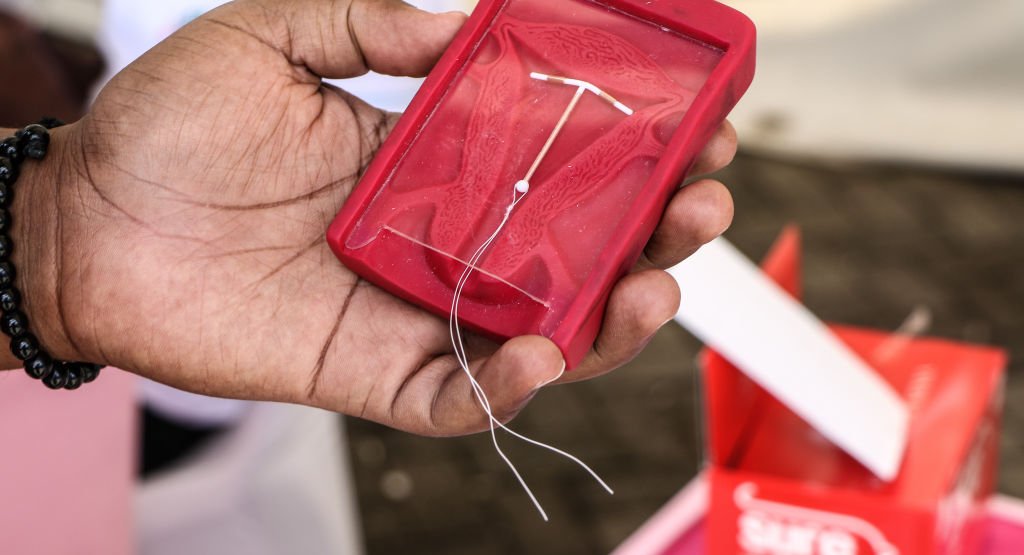It’s been nearly a decade since Andalusia Soloff got her first intrauterine device, or IUD, at a Brooklyn clinic — but she still remembers how excruciating it was to have the little T-shaped birth control gadget inserted.
“It was way more painful than I imagined,” Soloff said of the procedure, which involves inserting the device through the cervix and into the uterus. She said she was given ibuprofen and a heating pad to cope with the pain, but wondered at the time why the doctor hadn’t done more to prepare her for how agonizing the experience would be.
“I just came up with thinking that they don’t want to scare people off from getting IUDs,” Soloff said.
The U.S. Centers for Disease Control and Prevention issued guidance on the importance of pain management for IUD placements earlier this month. But in New York City, there’s still a patchwork of options available to ease the discomfort of the procedure. That leaves patients to scour the internet or rely on word of mouth to find locations that can offer some relief as the contraceptive grows in popularity.
Local OB-GYNs said different clinical practices have different pain management resources available to them. They also noted that doctors often have to make educated guesses about which methods will work best for their patients, since studies show there’s no silver bullet that works for everyone.
Some patients are told to take a handful of ibuprofen ahead of time, while others are offered local anesthetics, anxiety medication or even deep sedation. Some New Yorkers have resorted to trading tips online, in local Reddit threads, about the types of pain management options offered at different clinics.
“Pain is a little tricky to talk about because it’s subjective and it occurs on a spectrum,” said Dr. Kevia Taylor-Sullivan, the director of obstetrics and gynecology at Ryan Health, a network of federally subsidized health centers that primarily serve low-income patients. “Everybody’s perception of pain is different.”
Taylor-Sullivan suggested that anyone interested in getting an IUD for the first time should research what it involves and understand their own pain tolerance and anxiety around medical procedures.
Patients should also be sure they are comfortable with their doctor and the pain management options they’re being offered in the initial consultation, advised Dr. Monica Dragoman, system director for the Division of Complex Family Planning at Mount Sinai Health System.
In a CDC survey conducted between 2015 and 2019, more than 1 in 5 sexually experienced U.S. women of reproductive age reported ever having an IUD. That’s up from about 8% a decade prior.
Taylor-Sullivan and other OB-GYNs who spoke with Gothamist said they typically try to determine what type of pain management a patient might need during an initial counseling session before inserting, removing or replacing an IUD. Some IUDs can effectively prevent pregnancy for up to 10 years before needing to be replaced.
Research shows that patients who have given birth before are less likely to experience high levels of pain during IUD placement. Taylor-Sullivan said that while she takes her patients’ pain tolerance and anxiety about the procedure into account, she also considers their past experiences, including whether they have had a difficult IUD placement in the past.
“At Ryan, we offer everything from no intervention to something as simple as an ibuprofen, all the way up to something as interventional as a paracervical block,” Taylor-Sullivan said.
In its latest recommendations, the CDC cites several studies showing that a paracervical block, which involves injecting a patient with the numbing agent lidocaine, “might reduce patient pain.” But Taylor-Sullivan noted that the procedure doesn’t work for everyone and the injections themselves can also be uncomfortable. She said the procedure can also extend the time it takes to place an IUD, which is typically just a few minutes.
“It’s a balancing act,” she said.
Dr. Antonette Whitehead, a partner at Downtown Women OB-GYN Associates in SoHo, said patient preference is a major factor.
“Some people come into our office and say, ‘Oh, less is definitely more,’” Whitehead said.
But for those who are worried about the procedure, Whitehead said she sometimes offers anxiety medication ahead of IUD placement, in addition to having a range of pain management tools in her arsenal.
That includes suggesting that patients come in for the procedure while on their periods, or offering misoprostol, a drug that is typically used for abortions but can also be used to soften the cervix.
Whitehead said both of these options can make IUD placement easier. The CDC only recommends misoprostol for specific circumstances, including for patients who previously had a failed IUD placement.
Having a sonographer available to guide the placement of an IUD can also help ease the process, Whitehead said.
Because her practice is affiliated with NYU Langone Health and has access to hospital operating rooms, Whitehead said she would also be able to fully sedate someone for an IUD placement in rare cases. But not all clinics are able to offer that option.
Planned Parenthood of Greater New York recently announced that because of the high cost, it would no longer offer deep sedation for IUD placement starting next month.
Dragoman at Mount Sinai said it’s great that more attention is being paid to the pain associated with IUDs, but she believes more research needs to be done to find effective solutions.
She works with Dr. Lauren Kus, who is conducting a clinical trial to determine whether an inexpensive TENS device, which uses a mild electrical current to reduce pain, could be effective.
“It’s important that we as physicians remain vigilant in considering new strategies that might offer some promise for patients,” Kus said.
But it’s a challenge, given that no IUD placement is exactly the same. Soloff said she “mentally prepared” for the pain when she had her IUD replaced several years after she got it — and found that the second time was much easier than the first.
